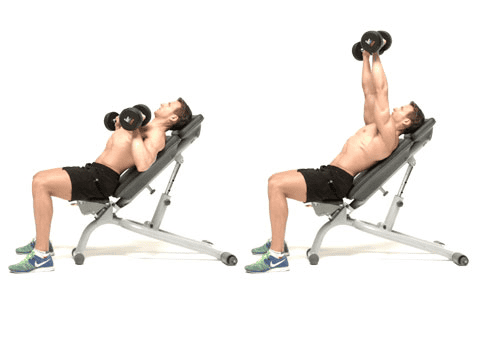This is an automatically translated article.
Muscle flexion, muscle flexion is not only popular in bodybuilding competitions but is also an exercise to increase muscle strength. Because when you flex a muscle, you're creating temporary tension that causes the muscle fibers to shrink or contract. Some specialized exercises such as isometric strengthen the muscles by tensing them and keeping them stationary, the force that is generated while the length of the muscle bundle remains the same.
1. Benefits of muscle contraction exercises
Isometric flexion, when incorporated into your daily exercise regimen, can provide a number of benefits as follows:
Decreases systolic and diastolic blood pressure. Allows exercise even when normal muscle movements can cause pain. Exercises that support the spine and the whole body can help you increase your balance and abdominal strength. These workouts are quite convenient, usually don't require any equipment or workout space. Some isometric exercises may include dumbbells or resistance bands.

Các bài tập co cơ được thực hiện ngay cả khi bạn đang bị đau
2. Does flexing muscles make them stronger?
If you only occasionally bend the muscles, it will not make the muscles strong and healthy. However, if you persist in doing some Isometric exercises such as Plank, Wall Sit, Glute Bridge ... and some other endurance exercises, the effect on the muscles will be more obvious.
If you want a more comprehensive workout for a particular muscle or muscle group, it's important that you do twists, flexes in a variety of positions and in a range of coordinated movements. Flexing with isometric exercises has the advantage of increasing muscle strength, but does not make your muscles as flexible as other exercises.
3. When to do Isometric muscle contraction exercises?
Contraction exercises can be especially helpful for people recovering from an injury, especially a shoulder or knee injury. Keeping the contracted muscles in a position will not put pressure on the joint. If you have a joint injury or arthritis, isometrics may be the ideal exercise and are less painful than other strength training exercises.
Besides, isometric exercises do not require much time, so if you only have a few minutes to spare, you can still do some exercises and even without any additional equipment .
In addition, isometric exercises can also prevent your blood pressure from rising suddenly. So, if you have high blood pressure or are at risk of developing it, you can try these exercises.

Các bài tập co cơ Isometric hiệu quả với những người đang cần phục hồi chấn thương khớp vai
4. Suggest some muscle contraction exercises to increase muscle strength
There are a variety of Isometric exercises for you to do anytime, anywhere. Here are some simple twists and turns that will strengthen many of your major muscle groups.
4.1. Plank
This move is extremely popular because it can be practiced anytime, anywhere and is highly effective in tightening muscles, especially abs, legs and hips.
How to do it:
Simple plank is done by keeping the body in a straight line, lifting force into the forearms and toes. To achieve results during the exercise, the practitioner needs to tighten the abs and glutes. The practitioner should perform 3-4 times of Plank per day, each time holding for 30 seconds. If it's too difficult you can start with 20 seconds each time.
4.2. Wall sit
This sitting against the wall works the front thigh muscles as well as the hamstrings (the muscle at the back of the thigh) and the glutes.
How to do it:
Put your back against the wall. Feet about 50cm or more away from the wall. Lower your buttocks so that your legs form a 90-degree angle (chair pose). Hold for 15 seconds and stand up. Pause for a few seconds, then do 4 more for 15 seconds with short breaks in between.

Động tác Wall sit
4.3. Bent-over wall press
This move can work your chest and shoulder muscles.
How to do it:
Stand facing the wall, bring one foot in front of the other. Lean forward and push your arms straight into the wall. Hold for 20 seconds, pause and repeat 4 more times. If you stand up straight, the exercise will work the chest muscles more, but the more you lean forward, the more beneficial the exercise will be for your shoulders.
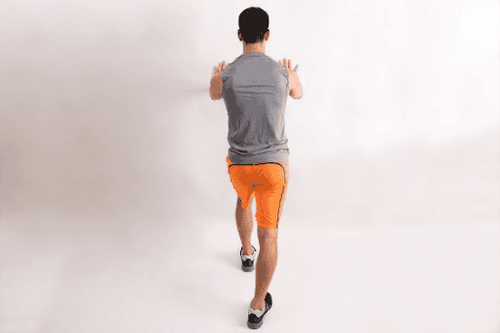
Động tác Bent-over wall press
4.4. Biceps and triceps squeeze
This exercise works to twist the muscles with both biceps (Biceps) and biceps (Triceps).
How to do it:
Bend left arm at a 90-degree angle in front of you, left palm facing up, squeeze. Grab your left wrist with your right hand, and at the same time push it towards your right hand with your left hand. Hold for 20 seconds, pause, then switch hands. Do each hand 3-4 times.

Động tác Biceps and triceps squeeze
4.5. Addductors squeeze
This exercise strengthens the adductor muscles, the group of muscles that run from your pelvis to your thighbone.
How to do it:
Lie on your back, put your feet on the floor and bend your knees. Place an exercise ball or similar between your knees and squeeze them together. Hold for a few seconds and pause. Repeat 8-10 times. Try to do 2 or 3 sets of 10 each day. SEE ALSO: The best abs exercises you can do
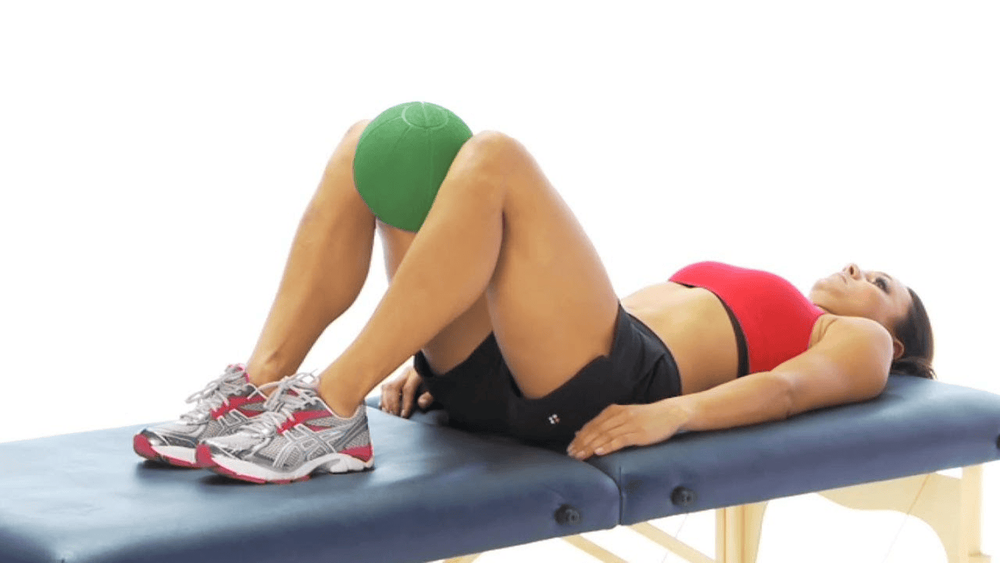
Động tác Adductors squeeze
4.6. Body hold
This exercise helps to increase the strength and tone of the abdominal muscles.
How to do it:
Sit on the floor with knees bent, feet flat on the floor. Extend your shoulders straight and combine with straightening your legs, forming a "V" shape. Hold the pose for 15 seconds, pause and repeat 4 more times.
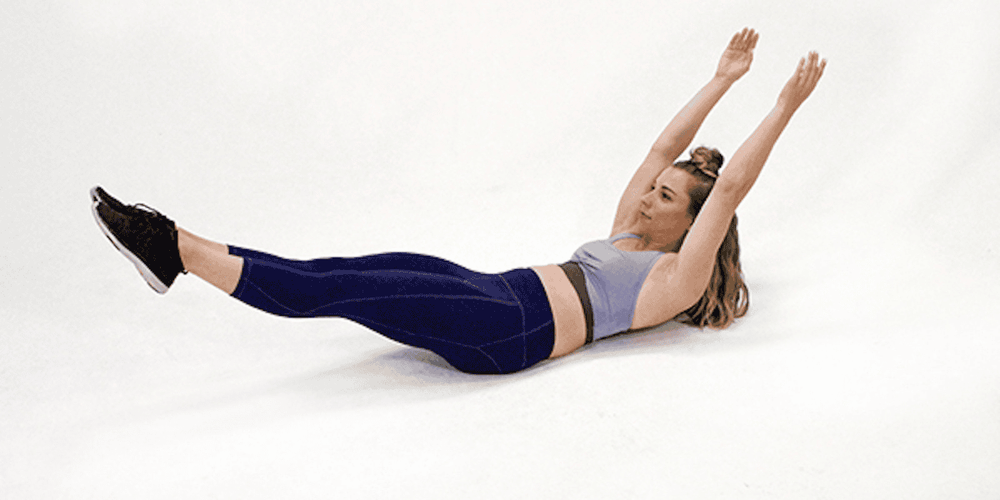
Động tác Body hold
4.7. Neck squeeze
This is an exercise that strengthens and strengthens the neck area.
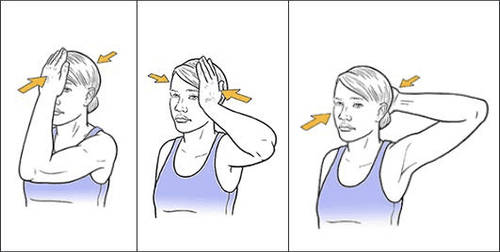
Động tác Neck squeeze
How to do it:
Stand up straight, feet shoulder width apart, palms on forehead. Gently press your palms against your forehead while contracting your neck muscles. Hold for 10 seconds. Then place your hands behind your head and apply force while still squeezing your neck muscles. Hold for 10 seconds. Repeat the same with the hand on the right side of the head and once on the left side.
5. Notes when practicing
Although flexion and twisting exercises are usually quite safe to perform, there are still some precautions to remember to ensure safety during exercise. Some exercisers often hold their breath while flexing, but it is quite dangerous because it can cause a sudden increase in blood pressure. Therefore, you should always inhale and exhale regularly when doing any strength training exercise, and at the same time should relax the muscles, because they are not directly related to the exercise.
Isometric contraction exercises are a very effective way to increase muscle strength. These exercises, which are short in duration, focus only on certain muscle groups, can be helpful for people with high blood pressure, injuries, and limited range training. As with any new strength training exercise, consult your doctor or fitness professional to make sure these forms of exercise are appropriate and safe for you.
Please dial HOTLINE for more information or register for an appointment HERE. Download MyVinmec app to make appointments faster and to manage your bookings easily.
Reference source: healthline.com




